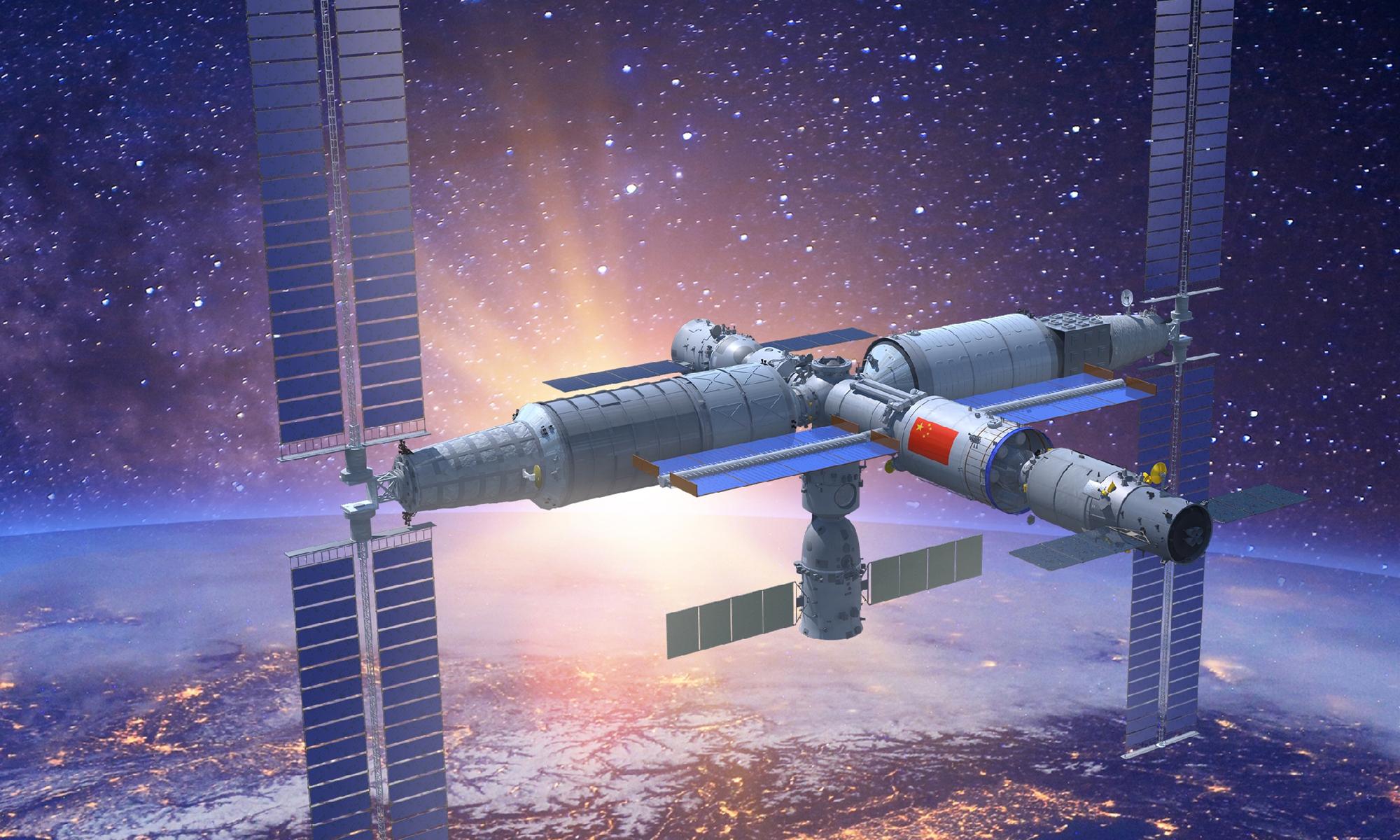
File Photo
China will realize three firsts in its space station mission in yet another ambitious aerospace year with more than 50 scheduled launches. The country will achieve the first combined flight of six spacecrafts, the first six-month-stay of taikonauts, and the first time for two crews to stay in orbit simultaneously, the China Aerospace Science and Technology Corporation (CASC) announced in a blue paper released on Wednesday.
"A total of six manned missions are planned to fully complete a space station with the Tianhe core cabin as the control center, and the Wentian and Mengtian experimental modules as the main experiment platforms that are attended by crew year-round," the blue paper said.
"In 2022, in particular, the CASC revealed that it will launch two manned missions with Long March 2F carrier rockets. The Long March 2F Y14 vehicle, which has remained in emergency rescue status at the launch pad as backup for the current Shenzhou-13 mission, is in good operating conditions. The Y15 vehicle, is scheduled to launch the Shenzhou-15 manned space mission in the latter half of this year," chief designer of the rocket, Liu Feng, said.
Bo Linhou, vice chief designer of the space station system, said that this year the Shenzhou-14 and -15 manned spacecrafts will both dock at the space station simultaneously for the first time, forming a six-module combination that allows six taikonauts to shift duty in orbit.
The space station will face new challenges such as module transposition, combined work of large and small robotic arms, and cargo exit which require an exceptionally complex control network.
"The space station mission includes three stages: key technological verification stage, construction stage, and operation stage. Currently, it is still at its first stage until the Shenzhou-13 crew safely return from their six-month stay. By then, it will enter the second stage," Bo noted.
During the construction stage, the Tianzhou-4 cargo spaceship, the Shenzhou-14 manned craft, two experimental modules, the Tianzhou-5 cargo spaceship, and the Shenzhou-15 manned craft will be rolled out in sequence.
Upon completion, the space station will form a T-shaped structure with a cabin room of over 110 cubic meters, allowing a long-term stay for a crew of three and short-term stays for six. After completing functional and performance testing in orbit, the space station will move to the operational phase.
It is worth noting that the Shenzhou-13 manned spacecraft will return to Earth this year by adopting a rapid return program which has never been used before. It is said the program will improve the taikonauts' comfort and efficiency.
China's space station is expected to be completed in 2022 with a space laboratory on board and a crew of taikonauts on long-term assignments to perform large-scale scientific experiments and maintenance.
Another highlight of this year includes the maiden flight of the Long March 6A, a medium-lift carrier rocket consisting of a 50-meter liquid-propelled core booster and four solid-fuel side boosters. It will be tasked with transporting satellites to multiple orbits such as sun-synchronous, low-Earth or intermediate circular orbits.
Stargazers can set their eyes on China's Smart Dragon-3 commercial rocket, also debuting in 2022, which is capable of putting in orbit 20 satellites in one launch.




